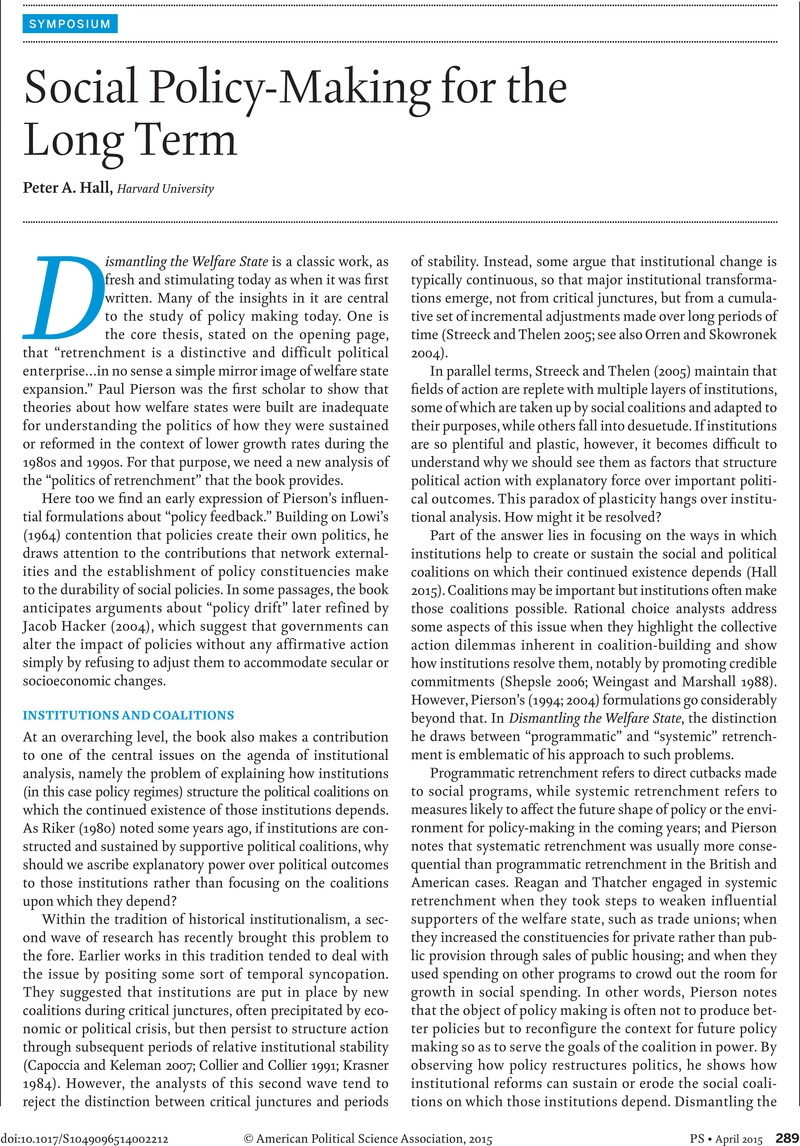Crossref Citations
This article has been cited by the following publications. This list is generated based on data provided by Crossref.
Nelson, Michael
2015.
Bill Clinton and Welfare Reform: A Perspective from Oral History.
Congress & the Presidency,
Vol. 42,
Issue. 3,
p.
243.
van der Heijden, Jeroen
and
Kuhlmann, Johanna
2017.
Studying Incremental Institutional Change: A Systematic and Critical Meta‐Review of the Literature from 2005 to 2015.
Policy Studies Journal,
Vol. 45,
Issue. 3,
p.
535.
Weckwerth, Jan
and
Weishaupt, Timo
2019.
Still Seeking Coordination? Assessing German Employers’ Interests in the Digitalized Social Market Economy.
Zeitschrift für Sozialreform,
Vol. 65,
Issue. 3,
p.
333.
Drew, Jonathan Hudson
2020.
Commissioned Book Review: J Mahoney and K Thelen, Explaining Institutional Change: Ambiguity, Agency and Power.
Political Studies Review,
Vol. 18,
Issue. 4,
p.
NP21.
Galik, Christopher S.
and
Chelbi, Leila
2021.
Revisiting institutional stability: A systematic review and distillations of dominant modes.
Environmental Policy and Governance,
Vol. 31,
Issue. 5,
p.
463.
Mavrikou, Maria
Zahariadis, Nikolaos
and
Karokis-Mavrikos, Vassilis
2022.
The strategy of venue creation: Explaining health policy change in Greece.
International Review of Public Policy,
Vol. 4,
Issue. 3,
p.
293.



